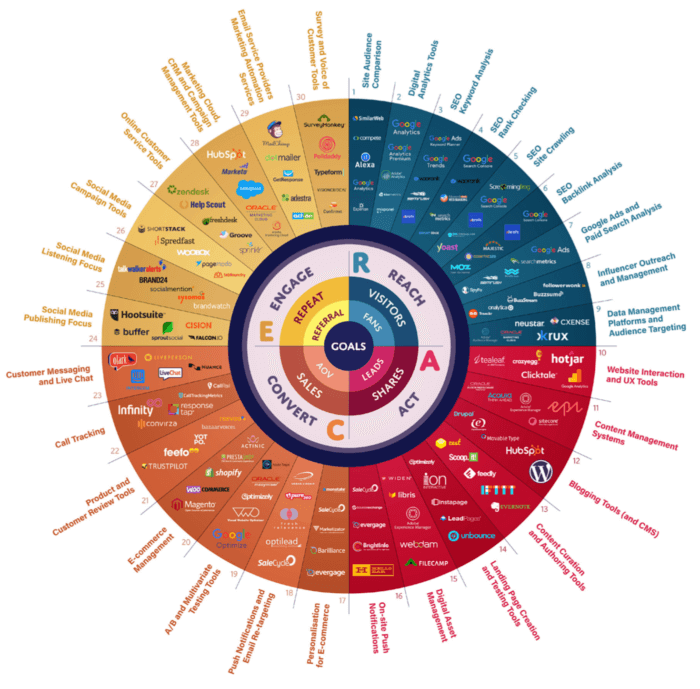Examples of digital marketing tools and techniques to give you an edge in the year ahead
Well, we’ve nearly made it! For years I’ve been looking to the future, predicting how innovations in digital media, platforms and technology will shape marketing in 2020. The cutting edge examples certainly show the exciting opportunities available – there is almost too much choice…
In this article, I’ll explore five key trends based on examples and research on the adoption of the latest marketing techniques and technology marketers can use.
Now we’re nearly at 2020, we can see the huge impact that digital marketing has had. Looking at advertising alone, these eMarketer predictions show how the duopoly of Facebook and Google dominate paid media investments online, although offline media buys remain important for many larger brands.
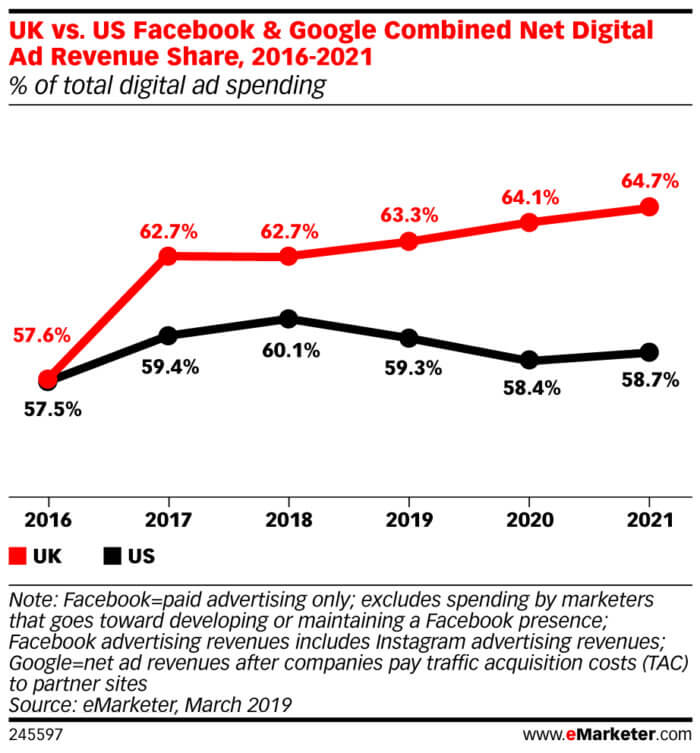
Trend 1. Lifecycle marketing
Although it’s often said that the ‘funnel is dead’ since consumer follows non-linear journeys, regardless of the product or service you’re involved with marketing, it will always be the case that to grow a business, your primary focus is growing awareness, closely followed by increasing customer leads and prospects.
This focus is shown by the latest Altimeter / Prophet State of Digital Marketing report, which shows a primary focus on increasing awareness.

The role of digital in creating a unified customer experience is also high in the response, but it’s shocking that digital marketing isn’t seen as a driver of boosting revenue from existing customers. It’s an artefact of the question since digital marketing is effective in achieving all of these goals, including customer retention.
A more practical way to plan to integrate online marketing into marketing activities is to consider communications from a customer point-of-view through the customer journey. I call this always-on lifecycle marketing and recommend you review your use of online AND offline media across the customer lifecycle.
An example of an audit is shown by this example of the use of marketing activities by a B2B company, which although strong at the top-of-funnel in terms of activities used, is less strong in the middle and bottom-of-funnel nurture and re-targeting activities. Many businesses are adopting marketing automation and account-based marketing technology to implement these touchpoints. See the article linked to above for all of the potential activities that can be audited.

Trend 2. Conversational marketing
For me, this is the most exciting trend in marketing today, bringing together rapid consumer adoption of smart speakers and innovation in search query processing, conversational interfaces and messaging.
Conversational marketing was highlighted as a key innovation in the Latest Gartner hype cycle alongside Artificial Intelligence, which often fuels it.
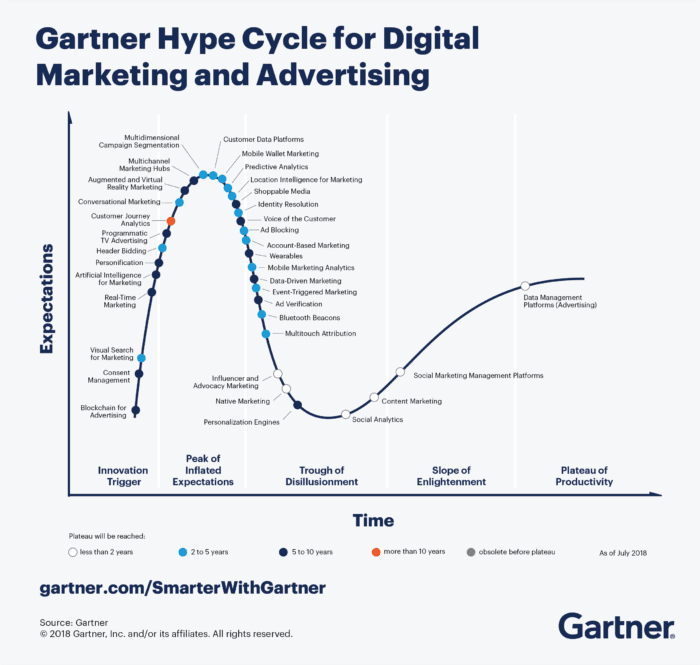
Gartner explains:
“Conversational marketing technologies enable interactions between companies and customers that mimic human dialogue and do so at scale. This category is near the Peak of Inflated Expectations phase”.
Personally, I think the hype about smart speakers to support the purchase journey is just that. While some products lend themselves to purchase, where a choice is to be made amongst complex products, they just won’t cut it until we have truly intelligent comparison bots. However, the research suggests I may be wrong. A study of 2,000 British adults commissioned by Artefact UK, an AI and data-driven agency, reveals that:
“Six out of ten smart speaker owners (60%) have used them to make a purchase in the past year. In fact, nearly a quarter (22%) said they have done so within the past week”.
I believe that building in more relevant to web, email and mobile-based conversations can have a bigger impact by boosting relevance and speaking in a more personal tone. Persado is an interesting tech here.
Persado uses a copy impact classification applied to existing copy, which is used to tailor copy and calls-to-action on an individual basis.

For example, using Persado Natural Language Generation to run an experiment, Air Canada sparked a higher response using Anxiety language getting a 3% engagement lift, compared to a 5% drop using Exclusivity language, and a 3% drop using Safety language.
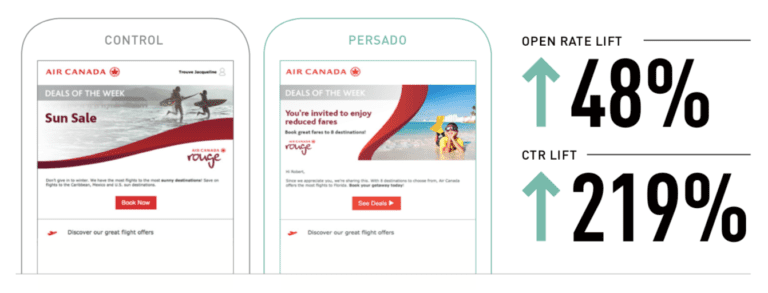
Another example of AI application is nutrition and wellness retailer Holland & Barrett using AI to provide better-targeted emails. This Machine Learning approach from Tinyclues goes beyond optimizing copy using a tool like Persado, instead, it also involves targeting based on the behaviour of individuals to create more micro-targeted campaigns.
Speaking at a session I chaired at the Email Innovation Summit, Richard Lallo, Head of Digital Marketing, described what he calls ‘strategic promotions and mono-product pushes’ in a campaign. The business was able to drive campaign revenue and increase re-purchase rate while sending emails. Campaign revenue increased by 27%, open rates increased by 19%, while email send volume decreased by 23%, which also gives cost savings.
Trend 3. Insights-driven marketing
At Smart Insights we’re huge fans of using analytics and insight to drive business performance and optimize the results from digital marketing. It’s why we’re called what we are.
Improving their data-driven marketing is an aim of many businesses indicated by the most desired skill amongst digital marketers revealed by the Altimeter/Prophet State of Digital Marketing report.

Businesses using this approach are trying to gain the benefits reported by Mckinsey research that suggested that:
Intensive users of customer analytics are 23 times more likely to clearly outperform their competitors in terms of new customer acquisition than non-intensive users, and nine times more likely to surpass them in customer loyalty.
In addition to advances in customer analytics supported by CDPs described in the next section, new Voice of the Customer (VoC) techniques, such as online-hosted customer communities, can improve customer preferences for future products and how they are delivered.
For example, Red Bull used insight platform Vision Critical to launch a community of consumers passionate about the energy drink category. By providing a deeper understanding of consumer preferences, the community challenges widely-held assumptions. The company, for instance, learned who consumes Red Bull drinks — and how and when they buy — were changing. Data from the community provides insight on the competitive landscape, revealing channels the company can enhance to improve growth. The community also helps Red Bull deliver more value to retailers.
Trend 4. Marketing technology
Today, Marketing Technology (Martech for short) presents a bewildering choice of software services for businesses looking to improve their management of digital media, experiences and supporting data. If your business and your agencies adopt the right blend of Martech, it can help give you an edge against competitors, but if not, you may be missing out on the insights and automation processes they are using.
The latest 2019 Martech supergraphic from Scott Brinker, a specialist who hosts Martech conferences and has advised on technology for HubSpot, has created this somewhat scary map of all the potential categories and services that companies can use.
To highlight the range of great services available and to simplify the options a little, we designed this essential digital marketing tools infographic to recommend the categories of tools you should consider across the Smart Insights RACE Planning system and highlight the most popular, most capable tools.
We will create the annual update for this in early 2020, discussing it recently on LinkedIn has highlighted some of the latest trends that aren’t evident from this version of the wheel. Raviv Turner, Co-Founder, of B2B service @CaliberMind said:
“No MarTech stack is complete these days without the third leg of CRM, MAP & CDP. The only way to map, store, analyze and act on the complete end-to-end customer journey is having all the data in one place using a Customer Data Platform (CDPs).”
I’m not sure ‘the only-way’ is accurate, but that is the sentiment.
Kristen Obaid, Always On digital marketing campaigns manager for an international Education company, added:
“The Salesforce and Adobe MAPs are underrepresented here (eg Pardot can be used for email, social, CRM, CMS, audience management, analytics. Krux is now SF. They can both be used as DMPs if the data is configured properly.) BI with simple data integrations (like Domo, Tableau) are also missing, plus Intercom for service CMS eg FAQs, and Drift for automated service chat”.
Trend 5. Consumer Privacy and KYC
Repeated privacy faux-pas by Facebook, Google and security breaches at other brands leading to the release of customer details have highlighted to consumers that their data isn’t as safe with online brands as they may have once thought. Privacy regulations like GDPR have been enacted to improve data privacy with increased fines.
Record fines have arisen in 2019 from the maximum penalty for contraventions increasing under GDPR to up to €20m (£17.5m) or four percent of global turnover – whichever is the greater.
British Airways, was issued with a proposed fine of £183m for a breach of customer data and a £99 million fine on hotel chain Marriott for failing to protect personal data contained in approximately 339 million guest records.
While these may be more the concerns of the CIO or CFO rather than the CMO, it shows the need for marketers to work with colleagues to mitigate the potential impact of security breaches and reassure customers.
At the same time, we have seen a decreasing effectiveness of traditional identification methods such as cookies for tracking, which makes media ROI determination – supposedly one of the key benefits of digital channels – more difficult.
Emerging technologies can potentially help with both of these challenges.
New Identify Management or Know Your Customer solutions are being developed that can both improve security, reduce fraud and improve insight about customers across multiple devices.
For example, UK startup Hooyu blends traditional methods of customer verification such as database checks (where available) with ID document validation, digital footprint analysis, geo-location and facial biometrics. While this is most relevant for banks and other gambling applications, it indicates the range of data points that are now available.
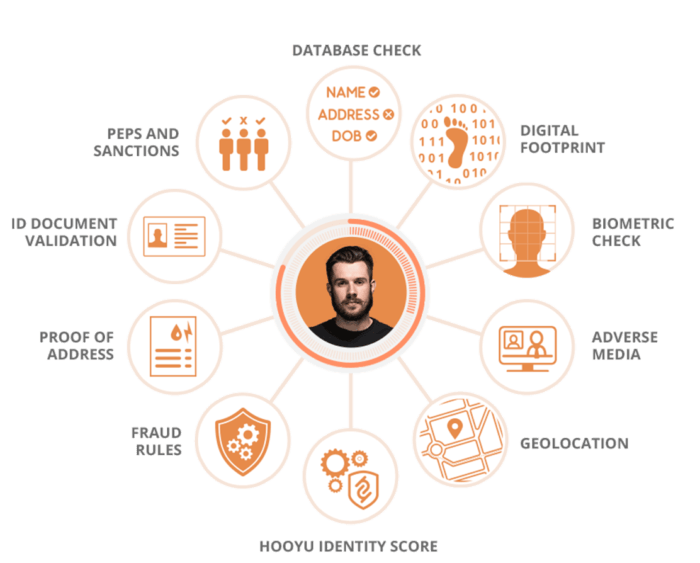

With these consumer concerns and new legislation such as the EU ePrivacy legislation about to be launched and the inaccuracy of tracking online with increasing restrictions built into browser like Chrome and Safari it seems like the days of the cookie (and particularly third-party cookies) and digital fingerprinting may be numbered. This means that businesses should be considering other alternatives if they aren’t already.
Discussing Unified ID – Why Identity becomes a key success factor in the post-cookie era era – Alwin Viereck, Head of Programmatic Advertising and Ad Management, United Internet Media estimates that
“More than 20% of all cookies in a desktop environment do not live longer than a day and a further 15–20% do not survive a month. For vendors in a third party context (which are typically all participants of the programmatic ecosystem), the problem might even be worse.
Multiplatform consent solutions like Sourcepoint and Identity and Access Management integration solutions like Auth0 and OneIdentity will be adopted more widely. Within AdTech new solutions will have to be found in response to Google and Apples Ad-targeting limitations.
Trend 6. Digital transformation and Marketing Transformation
Our managing digital marketing research revealed many challenges in terms of how digital marketing is run in companies today. Problems included a lack of focus on integrated strategy, testing, and optimization and structural issues like teams working in silos or a lack of skills in integrated communications.
To counter these types of problems and to make the most of the opportunities for growing a business through digital marketing, many businesses are now putting a digital transformation programme in place.
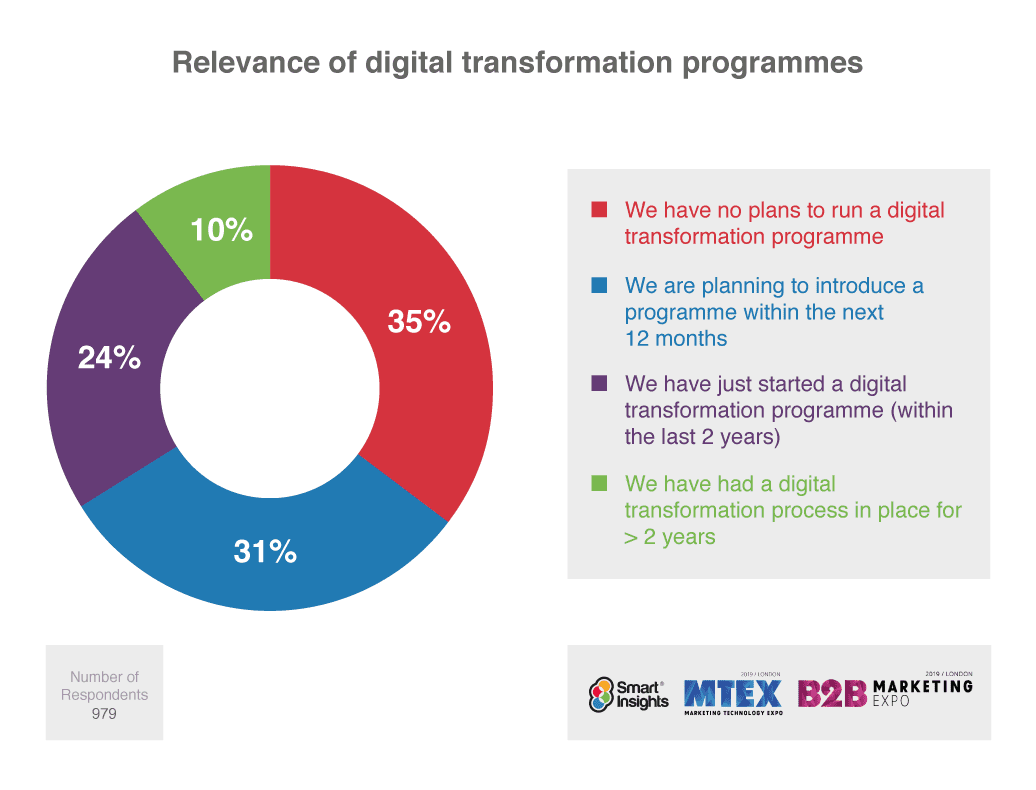
The aim of digital transformation is to develop a roadmap to improve digital capabilities and skills, while at the same time, integrating ‘always-on’ digital marketing activities with brand and product marketing in the business.
This chart from the research shows that many businesses are active in transformation to try to achieve this aim through the success factors covered in this briefing.
Despite some talk that we might be in a post-digital world by 2020 and some traditional marketers suggesting that “it’s time to shut down digital marketing for good” the reality is that many specialist digital job roles and are needed to run digital marketing activities as my post ‘10 reasons you still need a digital team‘ shows.
A common practice that we can expect to continue in the future is a move to a hybrid approach to managing digital marketing with digital marketing skills being developed in marketing teams as suggested by this structure.
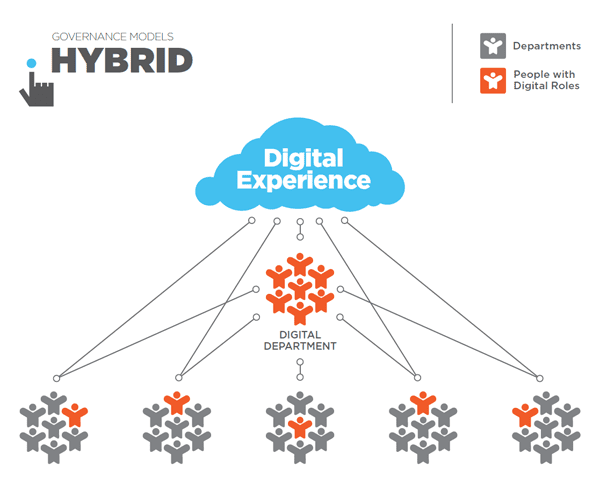 However, the label of a ‘digital department’ is outmoded, since the creation of large digital teams has caused silos to develop with other marketing and product teams. Instead, we can expect a continued move to a digital/marketing Centre of Excellence model. The DCoE will be smaller ‘digital services units’ that track the latest developments in development, advising on new digital techniques and technologies.
However, the label of a ‘digital department’ is outmoded, since the creation of large digital teams has caused silos to develop with other marketing and product teams. Instead, we can expect a continued move to a digital/marketing Centre of Excellence model. The DCoE will be smaller ‘digital services units’ that track the latest developments in development, advising on new digital techniques and technologies.
Through the year, we’ve been adding to our tools to help all members assess how well their businesses are adapting to using digital media and technology as part of Digital Transformation. To review your digital readiness, either for integrated digital marketing or individual channels, download our benchmarks or take our interactive capability graders.

All the best for grasping the opportunities from digital marketing in 2020 and beyond! To help you on your way take a look at our benchmarking templates, each of which will give you a quick review for digital marketing governance and the key channels like search, social, email marketing plus analytics, content marketing and experience.


